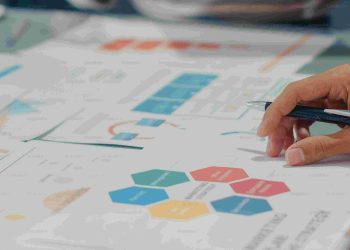Best Practices for Trend Rating Analysis
The art of anticipating trends is not just about data—it’s about seeing beyond the obvious, challenging norms, and recalibrating our perspectives.
In a world inundated with metrics and algorithms, the path to effective trend rating analysis demands more than just quantitative expertise. It requires the courage to question established frameworks and the curiosity to forecast what lies ahead.
The Intersection of Personal Insight and Global Observations
Several years ago, while working in digital marketing, I faced a moment of reckoning. A high-yield project hinged on adopting a trend before competitors caught wind of it. My instinct told me to trust a then-underrated social media platform, despite resistance from my peers. That gamble paid off, ushering in career-defining results and prompting me to reevaluate how we perceive trends—not just as fleeting phenomena but as markers of deeper societal shifts.
Trends are personal. They emerge via societal patterns but often resonate deeply with individual experiences. When analyzing these trends, stepping outside the confines of conventional business thinking allows us to see connections between philosophy, psychology, and technology. For example, the rise of AI-powered interface design isn’t just a technical progression; it’s also a reflection of humanity’s desire for seamless communication and efficiency—a psychological craving to minimize friction in decision-making.
Challenging Conventional Wisdom
Traditional trend analysis often favors retrospect rather than anticipation. While looking at past data has its merits, the fixation on what has already worked fosters stagnation. Instead, why not start with what hasn’t yet debuted? Philosopher Nassim Nicholas Taleb’s idea of the
“black swan”
event—something unprecedented and game-changing—teaches us to take risks and approach trend forecasting with adaptive curiosity.
Consider blockchain technology. When first introduced, it was dismissed by many as niche or irrelevant in mainstream business systems. Critics failed to perceive its multidisciplinary potential—blurring the lines between economics, technology, and decentralized empowerment. Those who embraced it early unlocked competitive advantages, not merely through prediction but through active creation of their own applications.
Think Beyond Metrics: A Multi-Dimensional Strategy
Effective trend analysis melds disciplines, insight, and foresight:
-
Psychology:
Patterns emerge from human behavior. Examine how cultural values evolve and what triggers shifts in mass decision-making. -
Philosophy:
Trends often reflect larger existential questions. For instance, discussions around the “metaverse” aren’t merely about technology—they challenge notions of physical identity and experience. -
Business:
Economics forces us to ask: What sustains momentum? Why do certain industries continuously regenerate opportunities while others plateau?
The Future of Trend Prediction: A Bold Forecast
Looking ahead, AI will likely shift how organizations foresee emerging trends. Predictive AI, machine learning models, and data synergy across platforms will provide deeper insights—but technology alone isn’t the answer. Algorithms lack intuition. Combining AI’s efficiency with human critical thinking will redefine forecasting success.
Moreover, as the workplace decentralizes, expect growth in trends revolving around connectivity innovations and collaborative tools. Environmental consciousness will also drive industries toward eco-tech solutions, benefiting both customers and global ecosystems.
Practical Tips for Effective Trend Analysis
If you’re motivated to harness today’s tools for tomorrow’s insights, here are actionable strategies:
-
Engage in Continuous Learning:
Follow platforms dedicated to emerging technologies, cultural phenomena, and consumer preferences. Never assume you’ve mastered the art. -
Question Assumptions:
Why does the herd follow certain trends? Challenge reasons behind widespread acceptance and seek alternatives. -
Avoid Comfort Zones:
Attend conferences outside your industry niche. Exposure to broader ideas fosters new perspectives. -
Connect Cross-Disciplinary Dots:
Read academic papers on behavioral economics, art trends, or even neuroscience to uncover hidden correlations. -
Forecast Through Failure:
Remember that a failed prediction provides valuable lessons. Embrace mistakes as a step toward refinement.
Empowering Action
Trend analysis isn’t a passive exercise—it’s a dynamic, evolving process. Much like navigating a river, success requires anticipating bends and adjusting your course as needed. If you’re unsure where to start, begin with the data but enhance it with intuition, philosophy, and metaphorical thinking. Think of trends as not just waves but tidal surges of meaning waiting to be deciphered. Shape them before they shape you.
As futurist Alvin Toffler aptly said,
“The illiterate of the 21st century will not be those who cannot read and write, but those who cannot learn, unlearn, and relearn.”
Trend rating analysis is fundamentally about this iterative cycle of growth: continuously adapting your worldview while staying grounded in disciplined inquiry and action.
Whether you’re a business leader, data analyst, or anyone intrigued by the promise of tomorrow, the future belongs to those who dare to challenge convention and approach trends as transformative possibilities—not mere probabilities.











